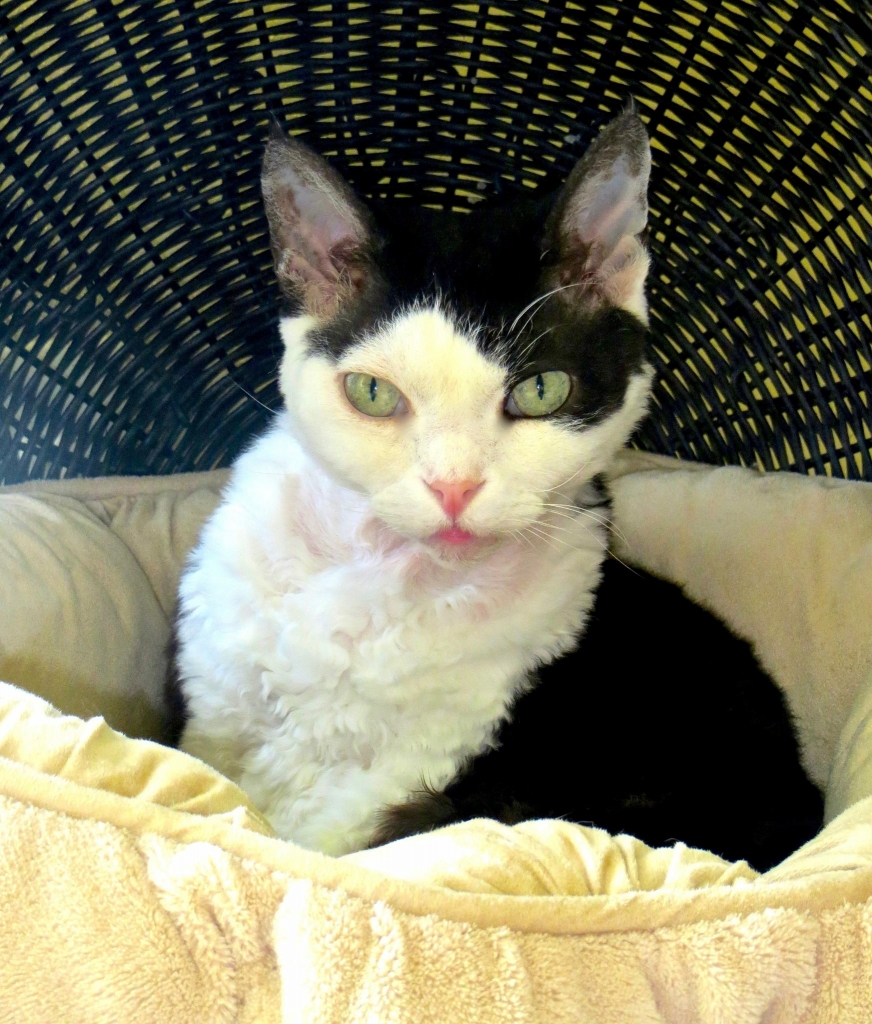Diet & Nutrition
Feeding your cat properly is the most important thing you can do to ensure your cat’s health, longevity, and well-being. Many purebred cats are predisposed to numerous health issues due to poor genetics, so a quality diet is even more critical. Here are some guidelines for your cat’s diet:
Dry Kibble – Many of us do feed dry kibble and brands with quality ingredients are absolutely preferable. It is important to DO YOUR HOMEWORK where ingredients are concerned. Learning how to read ingredient labels is a step in the right direction, as many cheaper brands start off with CORN as the primary ingredient and are loaded with fillers. (View this article on reading pet food ingredient labels). It is also highly recommended, however that quality canned food be included in your cat’s diet. First, your cat will not get enough water to maintain kidney and urinary tract health if fed kibble alone. Secondly, many dry kibble brands are way too high in carbs, and most commercial food contains a high percentage of protein derived from plant sources, not meat, leading to obesity and diabetes. Finally, feeding dry food alone may contribute to vomiting (due to irritation of the esophagus and stomach), irritable bowel problems, mega-colon, and allergic reactions such as digestive or skin problems.
Grain-free Dry Kibble – This is a big step in the right direction and is top notch when combined with a quality canned food. We have seen cats have reversals from diabetes, food allergies and obesity-related conditions with the removal of grains from the diet. (see links below)
Canned Food – A good choice, second only to a raw diet. There are many quality products available now that use human-grade ingredients, contain animal meats, and are low in carbs (see links below).
Raw Diet – This is really the way nature intended cats to eat, but many owners aren’t comfortable with that choice or it’s impractical due to lifestyle. There are some excellent frozen raw foods available that are 100% nutritionally complete. Even if your cat only eats raw occasionally, the benefits are enormous.
Homemade Diet – Many owners consider this option after they become educated and want to feed their cats the best possible way. It’s very complicated to make a complete, balanced diet at home, but we hope some of the links below help guide you.
Vegetarian/Vegan Diet – This sort of diet is NOT in the best interest of the cat. Cats are carnivores; they must eat animal meat.
Related Links
General information:
Cat Nutrition
The Basics of Feeding Your Cat
Food Manufacturers:
Companion Natural Pet Food
Evanger’s Dog and Cat Food
Innova Pet
Merrick Pet Care
Nature’s Variety
Orijen
Pet Curean
Primal Pet Foods
Solid Gold Health
Stella and Chewy’s
Taste of the Wild Pet Food
Timberwolf Organics
Wellness Pet Food
Wysong
ZiwiPeak

A Few More Tips:
Switching your cat’s diet – This must be a slow process; roughly, allow one month for every year of age (i.e. if your cat is 5 years old, take 5 months to transition). If your cat currently eats a commercial dry kibble, we recommend first gradually switching to a high-quality kibble that contains rice or oatmeal, then to a grain-free kibble. You can slowly introduce the grain-free high-quality canned food.
Free feeding can leads to obesity in some cats and must be carefully monitored. A high-quality kibble with few carbohydrates is less likely to cause this problem. In general, cats do best on one to three measured servings per day.
Veterinary prescription diets are standard in the profession, but we strongly suggest you do your homework if you have been prescribed any of these foods for your cat. Ask your vet why this is a prescription food (often, there is an added ingredient that can be supplemented to your cats regular food).
Quality food is expensive. – yes, maybe … but once you start feeding a high-quality food, you’ll find your cats need to eat much less, because they’re getting full nutrition. You’ll also find much less waste in the litter box since your cats are actually digesting and using most of the food, instead of passing through all the waste in cheaper, low-quality food.
Rotate your cat’s diet -Give your cat protein from varying sources. The worst thing you can do is feed your cat the same food every day of it’s life; this contributes to allergies and digestive issues.
Protein sources are an important part of feeding your cat – the most common allergens in cats are chicken and fish, because that’s what they most commonly are fed. Rotate between single-source novel proteins such as rabbit, duck, quail, different fish/seafood; red meats aren’t a typical diet for cats, but occasionally, light red meats (lamb/venison) are a good alternative.
